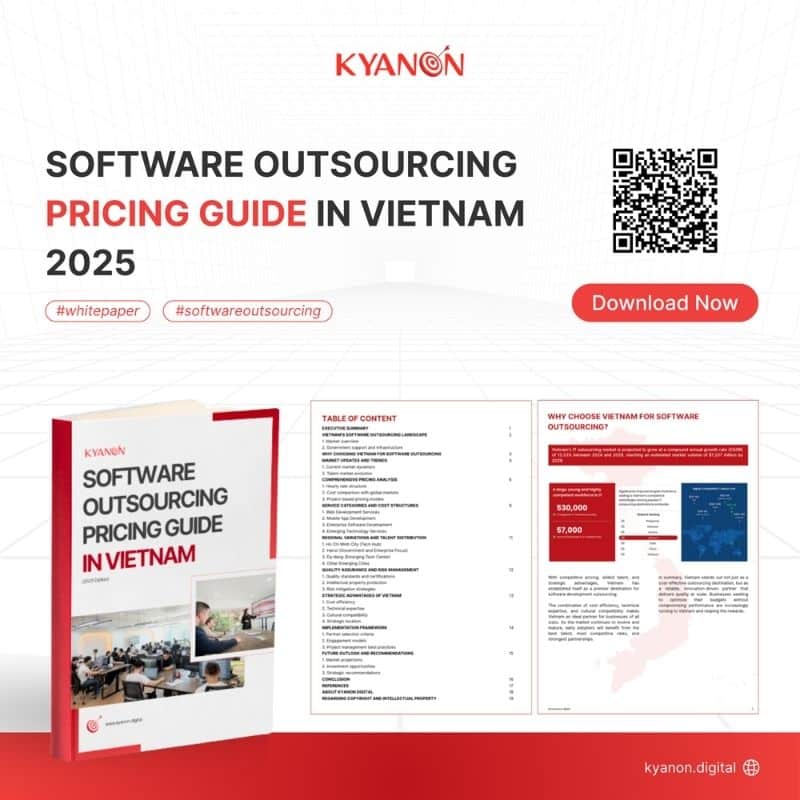Introduction
In today’s fast-paced digital landscape, businesses are under pressure to innovate quickly. Traditional software development can be time-consuming and resource-intensive, this is where a low-code platform comes into play. These platforms empower enterprises to build robust applications with minimal hand-coding, accelerating digital transformation and reducing development costs.
The global low-code development platform market is projected to be valued at approximately USD 10.46 billion in 2024 and is expected to surge to USD 82.37 billion by 2034, growing at a robust compound annual growth rate (CAGR) of 22.92% during the forecast period. This impressive growth is fueled by the rising need for rapid application development, coupled with the increasing momentum of digital transformation initiatives across industries such as finance, healthcare, retail, and manufacturing. (Precedence Research)

Low-code development platform market size (Source: Precedence Research)
In this blog, we’ll explore what a low-code platform is, its benefits, and a rundown of the most popular enterprise low-code platforms that are leading the market today.
What is an Enterprise Low-Code Application Platforms?
According to Gartner, enterprise low-code application platforms (LCAPs) are designed to accelerate the development and maintenance of custom applications. These platforms use model-driven development tools, generative AI, and prebuilt component libraries to streamline the entire application lifecycle, from design to deployment.
Enterprise LCAPs are built primarily for software engineering teams tasked with building and managing complex, scalable business applications. Key features include collaborative development environments, high-performance runtime systems, and robust support for application deployment, monitoring, and scalability.
These platforms also come equipped with governance tools, API integrations, developer documentation, training resources, and service-level agreements (SLAs) to ensure platform reliability and successful adoption. With strong support for business process automation, complex user interfaces, and integration with distributed data sources, enterprise low-code platforms serve as a powerful foundation for building a wide variety of modern applications.
Transform your ideas into reality with our services. Get started today!
Our team will contact you within 24 hours.
Why Are Enterprises Turning to Low-Code Development?
The adoption of low-code application development is no longer a niche trend, it’s becoming a strategic move for enterprises aiming to accelerate innovation, boost efficiency, and stay ahead in competitive markets. Let’s take a closer look at the key drivers behind this shift.
1. Faster Time to Market
One of the biggest advantages of a low-code platform is the ability to drastically shorten the application development lifecycle. By offering pre-built UI components, drag-and-drop functionality, and reusable logic, developers can move from idea to prototype and then to production, in days or weeks rather than months.
This rapid delivery allows businesses to respond to market changes, customer demands, and competitive threats with unmatched agility. In industries where time-to-market is a key differentiator, low-code tools become a game-changer.
2. Reduced IT Backlog
Enterprise IT departments are often overwhelmed with requests for new digital tools, process automations, or app enhancements. Traditional development approaches struggle to keep up with these demands, leading to long queues and frustrated stakeholders.
Low-code development platforms empower citizen developers, business users with little or no coding experience, to build applications themselves or collaborate with IT more efficiently. This democratization of development significantly reduces the IT backlog, allowing skilled developers to focus on more complex and mission-critical tasks.
3. Lower Development Costs
Building enterprise applications from scratch can be expensive, requiring specialized talent, long timelines, and significant resource allocation. In contrast, a low-code platform reduces costs in multiple ways:
-
Fewer developer hours needed
-
Smaller development teams
-
Quicker deployment and iteration
-
Reduced maintenance efforts thanks to standardized code components
For companies with limited IT budgets or aggressive growth targets, low-code tools offer an efficient path to digital transformation without breaking the bank.
4. Improved Business Agility
Agility isn’t just about speed, it’s also about flexibility. A low-code application development environment makes it easier for enterprises to iterate, pivot, and adapt applications based on real-time feedback or shifting priorities.
Need to update a workflow, change a form, or connect to a new API? Most of these changes can be implemented with minimal disruption using visual logic and configuration. This level of responsiveness is essential in today’s dynamic business environment.
5. Enhanced Collaboration Between Business and IT Teams
Traditionally, there has been a communication gap between business users who define the requirements and IT teams who implement them. Low-code platforms bridge this divide by using visual tools and shared environments that allow for real-time collaboration.
Business teams can participate directly in the development process, either by building parts of the application themselves or by quickly validating prototypes, ensuring that the final solution aligns more closely with user needs and organizational goals.
Popular Low-Code Platforms: Pros and Cons
Choosing the right low-code platform is crucial for aligning technology with your business goals. Below is a curated list of top platforms used by enterprises worldwide, along with their standout features, strengths, and limitations.
In Gartner’s 2024 Magic Quadrant for Enterprise Low-Code Application Platforms (LCAP), the leading vendors include Appian, Mendix, Microsoft, OutSystems, ServiceNow, and Pegasystems. The report highlights these vendors as leaders in the low-code market, demonstrating strong capabilities in both vision and execution for supporting complex, enterprise-grade applications.

Magic Quadrant for Enterprise Low-code Application Platforms (Source: Gartner)
1. OutSystems
OutSystems is a robust enterprise low-code platform known for its ability to build scalable, complex applications. It’s favored by large organizations for full-stack development and its enterprise-grade architecture.
Pros:
-
Full-stack capabilities (front-end, back-end, and database)
-
Built-in DevOps and version control tools
-
High scalability for complex enterprise applications
-
AI-assisted development and performance monitoring
Cons:
-
Steeper learning curve for non-technical users
-
Higher cost compared to simpler low-code tools
2. Mendix
Mendix, backed by Siemens, is a powerful low-code development platform for both citizen developers and professionals. It’s cloud-native and suitable for building multi-experience apps across industries.
Pros:
-
Strong support for both no-code and low-code users
-
AI and automation features included
-
Excellent for multi-channel deployment (mobile, web, etc.)
-
Cloud-native with multi-cloud support
Cons:
-
UI customization can be limited without coding
-
Requires training to fully leverage its capabilities
-
Performance may vary with very large-scale apps
3. Microsoft Power Apps
Power Apps is part of the Microsoft Power Platform and integrates deeply with Microsoft 365, Dynamics 365, and Azure—making it ideal for businesses already within the Microsoft ecosystem.
Pros:
-
Seamless integration with Microsoft products
-
Large library of connectors
-
Easy to use for citizen developers
-
Cost-effective for existing Microsoft users
Cons:
-
Limited offline capabilities
-
Less suited for complex or large-scale apps
-
Licensing can be confusing for new users
4. Appian
Appian is known for combining low-code development with process automation, making it a top choice for industries focused on workflow optimization and case management.
Pros:
-
Strong BPM (Business Process Management) capabilities
-
Integrated RPA (Robotic Process Automation) and AI tools
-
Enterprise-grade security and compliance
-
Fast prototyping and deployment
Cons:
-
UI flexibility is limited compared to some other platforms
-
Cost can be high for small to mid-sized businesses
-
Requires technical expertise for advanced applications
5. Salesforce Lightning Platform
Salesforce’s low-code platform allows companies to build apps that work seamlessly within its CRM environment. It’s best for customer-facing apps, workflows, and extensions.
Pros:
-
Native integration with Salesforce CRM
-
Access to AppExchange for third-party components
-
Strong community and support
-
Great for sales, service, and marketing use cases
Cons:
-
Primarily tied to Salesforce ecosystem
-
Not ideal for apps outside CRM scope
-
Can become expensive with growing usage
6. ServiceNow App Engine
ServiceNow App Engine allows enterprises to build apps to automate internal processes, particularly in IT operations, HR, and customer support.
Pros:
-
Tailored for workflow and service management
-
Built-in security and compliance
-
Strong AI and machine learning features
-
Rapid development of internal enterprise apps
Cons:
-
Primarily focused on internal use cases
-
High pricing for smaller organizations
-
Less flexibility for custom front-end design
7. Zoho Creator
Zoho Creator is a lightweight, affordable low-code platform for small to medium businesses. It offers a simple interface and rapid app deployment.
Pros:
-
Budget-friendly
-
Easy-to-use drag-and-drop interface
-
Fast deployment of small business apps
-
Good for automating simple workflows
Cons:
-
Not ideal for large-scale enterprise applications
-
Limited advanced customization
-
Performance issues with complex logic or large datasets
Popular low-code platforms comparison
| Feature | Salesforce | Power Platform | ServiceNow | Mendix | OutSystems | Appian | Retool | Replit | Quickbase | Bubble | Kissflow |
| Best For | CRM & Enterprise Automation | Microsoft 365 & Dynamics Automation | IT Service Management | Custom Enterprise Apps | Fast Scalable Enterprise Apps | Process Automation | Internal Business Tools | Cloud IDE & Dev Workflows | No-Code Database Apps | No-Code Web Apps | Workflow & Process Automation |
| Objects & Data | Custom Objects & Fields | Dataverse Tables & Columns | Tables & Fields | Domain Model (Visual) | Entities & Attributes | Records & Data Types | Connects to Databases & APIs | Code-based (Python, JS) | Connected Tables & Fields | Schema-Free DB | Prebuilt Templates & Forms |
| Page Layouts & UI | Lightning App Builder | Power Apps Canvas & Model-Driven | UI Designer & Forms | Page Layouts | UI Designer | Interfaces & Forms | Drag-and-Drop UI | Code-based UI | Form & Table Views | Visual Drag-and-Drop Editor | Workflow-Based UI |
| Workflow Automation | Flow Builder & Workflow Rules | Power Automate | Flow Designer | Microflows (Visual Logic) | Process Automation (BPM) | Process Modeler | JavaScript Automation | Code-focused Automation | Event-Driven Workflows | Workflows & API Triggers | Process Automation & Workflow Builder |
| Validation Rules | No-Code Rule Creation | Business Rules in Power Apps | Business Rules & Policies | Validation Microflows | Business Rules | Decision Tables | Custom JS Validations | Requires Coding | Logic-Based Rules | Conditional Logic | No-Code Business Rules |
| Reports & Dashboards | Reports & Dashboards (via UI) | Power BI Integration | Performance Analytics | Charts & Reports | Built-in Reporting | Reporting & Analytics | External BI Tools | Dev-Focused | Built-in Reporting | Plugin Support for Analytics |
Which No-Code/Low-Code Platform Is Right for You?
With the growing number of low-code platforms and no-code tools available today, choosing the right one can feel overwhelming. The ideal platform depends on several factors including your organization’s size, technical expertise, use case, and integration requirements. Below are key considerations to help guide your decision.
1. Define Your Use Case
Before selecting a platform, clarify your goals:
- Internal tools or dashboards? → Consider Power Apps or Zoho Creator for simplicity and speed.
- Customer-facing web or mobile apps? → Platforms like OutSystems or Mendix offer advanced customization and scalability.
- Process automation and workflows? → Appian or ServiceNow App Engine may be a better fit for workflow-centric solutions.
2. Assess User Skill Level
- Citizen Developers & Business Users: Look for platforms with drag-and-drop interfaces, templates, and minimal coding, like Bubble, Glide, or Microsoft Power Apps.
- Professional Developers or Hybrid Teams: Choose tools with advanced customization, version control, and full-stack development support, such as OutSystems or Mendix.
3. Check Integration Capabilities
Consider the existing tools and systems your apps need to connect with:
- Using Microsoft 365 or Azure? → Power Apps offers seamless integration.
- CRM-driven businesses? → Salesforce Lightning Platform is ideal.
- Need cross-platform connectivity? → Look for REST API support and third-party connector libraries.
4. Evaluate Scalability & Performance
- Small to mid-sized businesses may thrive with cost-effective, quick-to-deploy platforms like Zoho Creator.
- Large enterprises with complex needs should focus on platforms offering enterprise-grade architecture, multi-cloud support, and DevOps tooling, like OutSystems or Appian.
5. Consider Budget & Licensing Models
Pricing varies widely:
- Subscription-based or pay-per-user models may work well for small teams.
- For enterprise needs, look for platforms with custom pricing tiers that align with your expected usage, user volume, and SLA requirements.
6. Governance, Security & Compliance
For organizations in regulated industries (e.g., finance, healthcare, government):
Prioritize platforms with built-in governance tools, role-based access, audit trails, and compliance certifications (like HIPAA, GDPR, SOC 2).
7. Support & Training
Choose platforms that offer:
- Extensive documentation
- Developer communities
- Training resources and certifications
- Reliable technical support or dedicated success managers
Conclusion
As the demand for rapid digital transformation grows, low-code platforms are proving to be a game-changer for enterprises looking to streamline development processes, reduce costs, and foster collaboration across teams. By enabling both technical and non-technical users to create sophisticated applications, low-code platforms are revolutionizing the way businesses approach software development.
However, choosing the right platform is essential to ensure that your organization’s unique needs are met. Whether you’re looking for scalability, security, or advanced integration capabilities, there is a low-code solution that fits your business objectives.
At Kyanon Digital, we understand the importance of embracing the future of application development. That’s why we’ve partnered with Mendix, a leader in low-code platforms, to help businesses accelerate their digital transformation journeys. With Mendix’s powerful, scalable tools and our expertise in implementing cutting-edge solutions, we enable businesses to drive innovation, improve operational efficiency, and deliver high-quality applications faster than ever before.
Let Kyanon Digital and Mendix accelerate your business success with low-code development.
Contact us today to learn how we can help you build the future of your business.

















